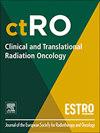Patient experience and shared decision-making in HPV-positive oropharyngeal cancer: A systematic review of qualitative and quantitative evidence
IF 2.7
3区 医学
Q3 ONCOLOGY
引用次数: 0
Abstract
Introduction
Human papillomavirus (HPV)-related oropharyngeal cancer generally has a good prognosis and can be successfully treated with different modalities (including de-escalation); therefore, shared decision-making regarding treatment has a special role. We aimed to assess how the patients experience this diagnosis in light of optimizing shared decision-making.
Materials and Methods
MEDLINE, Embase, CINAHL, PsycINFO, and Scopus were searched in two systematic reviews (CRD42023484134 and CRD42024501211). Studies were included if they described how patients with HPV-positive oropharyngeal cancer experience their illness and what factors they consider when confronted with a treatment decision. A results-based convergent synthesis design was adopted to analyze qualitative and quantitative evidence separately, then integrated through a narrative synthesis approach.
Results
Nine of the 1978 articles met the selection criteria, resulting in a total of 392 patients being included. Five factors influencing patient decision-making were identified from the quantitative evidence: priority for cure and survival, and preference for de-intensification, which resulted in top-ranked issues for over 65% and 73% of patients who expressed them, respectively. Three qualitative themes were identified to encapsulate patient experiences, encompassing domains related to receiving and dealing with the diagnosis, decision-making, and perception of the impact of treatments. Based on these findings, a prompting list was created as a suggested communication toolkit for clinical practice.
Conclusions
Our systematic review of the literature highlighted the multifaceted and complex experiences of patients facing the diagnosis of a curatively treatable HPV-positive oropharyngeal cancer. Our findings should be considered for optimal shared decision-making in clinical practice.
hpv阳性口咽癌的患者经验和共同决策:定性和定量证据的系统回顾
人乳头瘤病毒(HPV)相关口咽癌通常预后良好,可以通过不同的方式(包括降级)成功治疗;因此,共同决策治疗具有特殊的作用。我们的目的是评估患者在优化共同决策的情况下如何经历这种诊断。材料与方法在两篇系统综述(CRD42023484134和CRD42024501211)中检索medline、Embase、CINAHL、PsycINFO和Scopus。如果研究描述hpv阳性口咽癌患者如何经历疾病,以及他们在面对治疗决定时考虑哪些因素,则纳入研究。采用基于结果的趋同综合设计,分别分析定性和定量证据,然后通过叙事综合方法进行整合。结果1978篇文章中有9篇符合入选标准,共纳入392例患者。从定量证据中确定了影响患者决策的五个因素:治愈和生存优先,以及对去强化的偏好,这两个因素分别导致超过65%和73%的患者表达了他们的首选问题。确定了三个定性主题来概括患者体验,包括与接受和处理诊断,决策和治疗影响感知相关的领域。基于这些发现,我们创建了一个提示列表,作为临床实践的建议沟通工具包。结论我们对文献进行了系统回顾,强调了面临可治愈的hpv阳性口咽癌诊断的患者的多方面和复杂的经历。我们的研究结果应考虑在临床实践中最佳的共同决策。
本文章由计算机程序翻译,如有差异,请以英文原文为准。
求助全文
约1分钟内获得全文
求助全文
来源期刊

Clinical and Translational Radiation Oncology
Medicine-Radiology, Nuclear Medicine and Imaging
CiteScore
5.30
自引率
3.20%
发文量
114
审稿时长
40 days
 求助内容:
求助内容: 应助结果提醒方式:
应助结果提醒方式:


